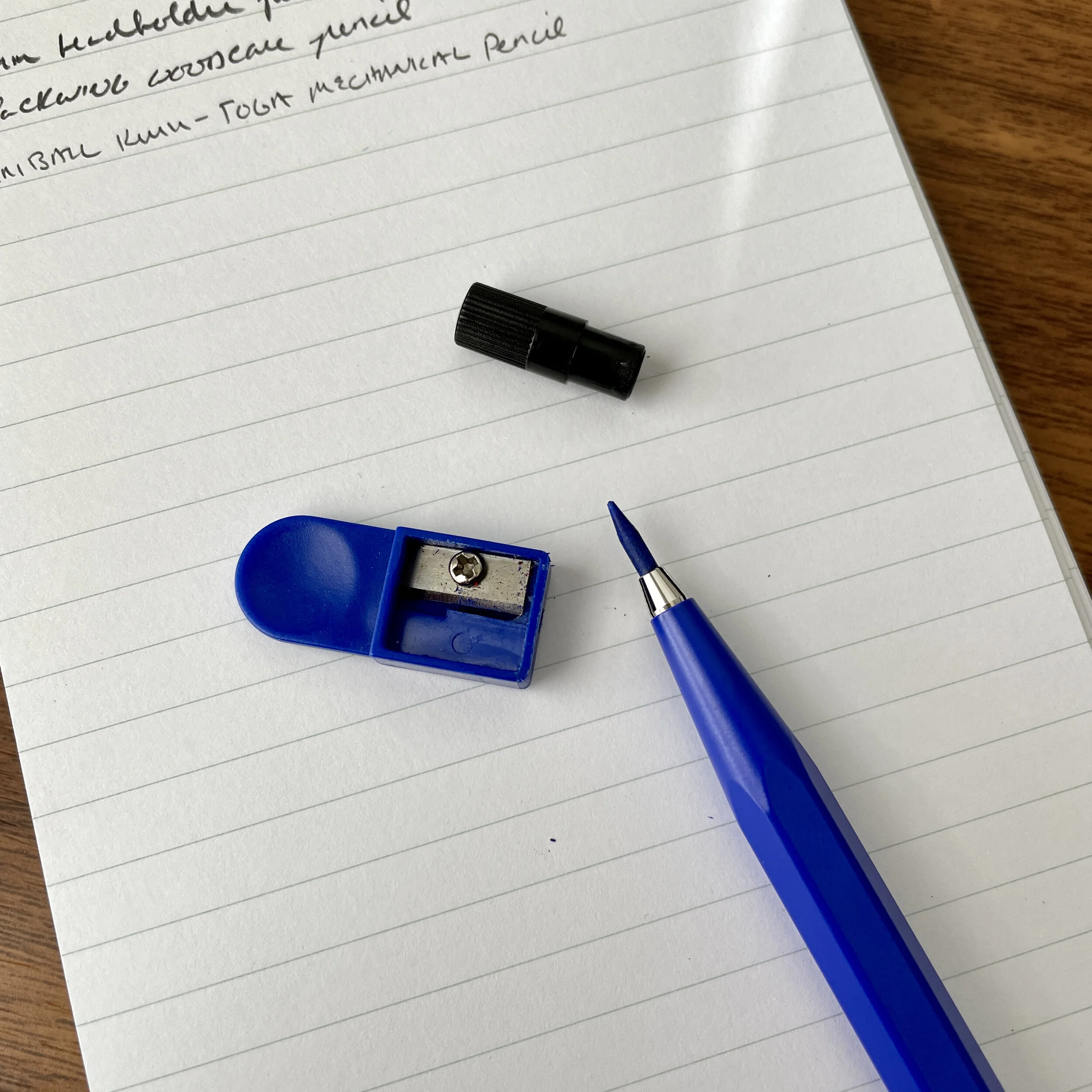Lead holders or “clutch pencils” are an overlooked and under-appreciated category of stationery, sitting in a strange twilight zone between woodcase and mechanical pencils. Despite many different options on the market, these pencils have garnered a reputation as artist’s or draftman’s tools, unsuitable for writing. That’s actually not the case at all, and I keep several on hand that I use regularly (and almost solely for writing).
Nearly all leadholders use a “clutch” mechanism to hold the lead, meaning that you depress the knock to release the button and the lead drops out via gravity, as opposed to a traditional mechanical pencil in which the lead advances a predetermined distance after each click. After sharpening the lead, you must reopen the clutch and push it back in.
A key difference between a lead holder pencil and a standard mechanical pencil is the diameter of the graphite. Lead holders typically use either 2mm or 3mm leads, whereas your traditional mechanical pencil uses leads with a much smaller diameter ranging from .2mm to .9mm, with the most popular sizes being .5mm or .7mm. If you write with heavier pressure, and find yourself constantly breaking standard mechanical pencil leads, a larger-diameter lead holder pencil will likely suit you better. I also prefer these larger leads because they offer the line variation and legibility of a woodcase pencil. (I’m often told that my handwriting degenerates into an unreadable scrawl when I write with mechanical pencils.)
.2mm lead refills. You refill a lead holder by feeding the lead into the front of the pencil. Most hold one lead at at time.
The downside? The clutch mechanism is a bit clumsier than a standard mechanical pencil, and you need to sharpen a lead holder much like you need to sharpen a woodcase pencil. You typically use a “lead pointer” instead of a standard pencil sharpener, with some lead holders, such as the Caran d’Ache Fixpencil, incorporating a sharpener/pointer into the nock or button. While you won’t have to deal with a large volume of wood shavings, the graphite dust from lead pointers can get messy very quickly. I always try to sharpen directly over a garbage can.
And, yes, some brands make blue and red leads (but these are used mainly for drawing and drafting).
Another consideration when choosing a lead holder is shape and weight. Those intended strictly for drawing and drafting tend to be heavier, and often feature metal knurling on the grip that some find uncomfortable when writing for longer sessions. For this reason, I gravitate towards lead holders that mimic the look and feel of a round or hexagonal woodcase pencil, including Caran d’Ache’s iconic “Fixpencil” pictured above. Fun historical fact: the Fixpencil was originally created as a replacement for standard woodcase pencils due to wartime materials shortages. The idea caught on, and the product has remained in the company’s lineup as one of its longest-running products.
Takeaways and Where to Buy
Despite their niche status, leadholders are fairly easy to find. Your local art or office supply store will likely stock leadholders from brands such as Mars and Alvin. Rotring even makes a lead holder version of its Rotring 88 pencil. I currently have three in my personal collection: a Sierra “Slip-On” that I purchased at Kinokuniya in NYC, the “Sostanza” Kickstarter pencil from a few years ago, and a Caran d’Ache Fixpencil.
Because I find them more versatile and among the most comfortable to use for traditional writing, the Fixpencils are my favorite, and for that reason I’ve chosen to stock them in the T.G.S. Curated Shop. I have both the standard matte black Fixpencil with a black, red, or blue button, as well as the Fixpencil 884 or “JR”, which is the same size and comes in blue, red, and green. The different Fixpencil versions are priced at $24.50 and $22.00, respectively. Refill leads are also available in HB, 2H, and 2B.
The Gentleman Stationer is an authorized reseller of Caran d’Ache products, as well as any other products featured in the T.G.S. Curated Shop.
